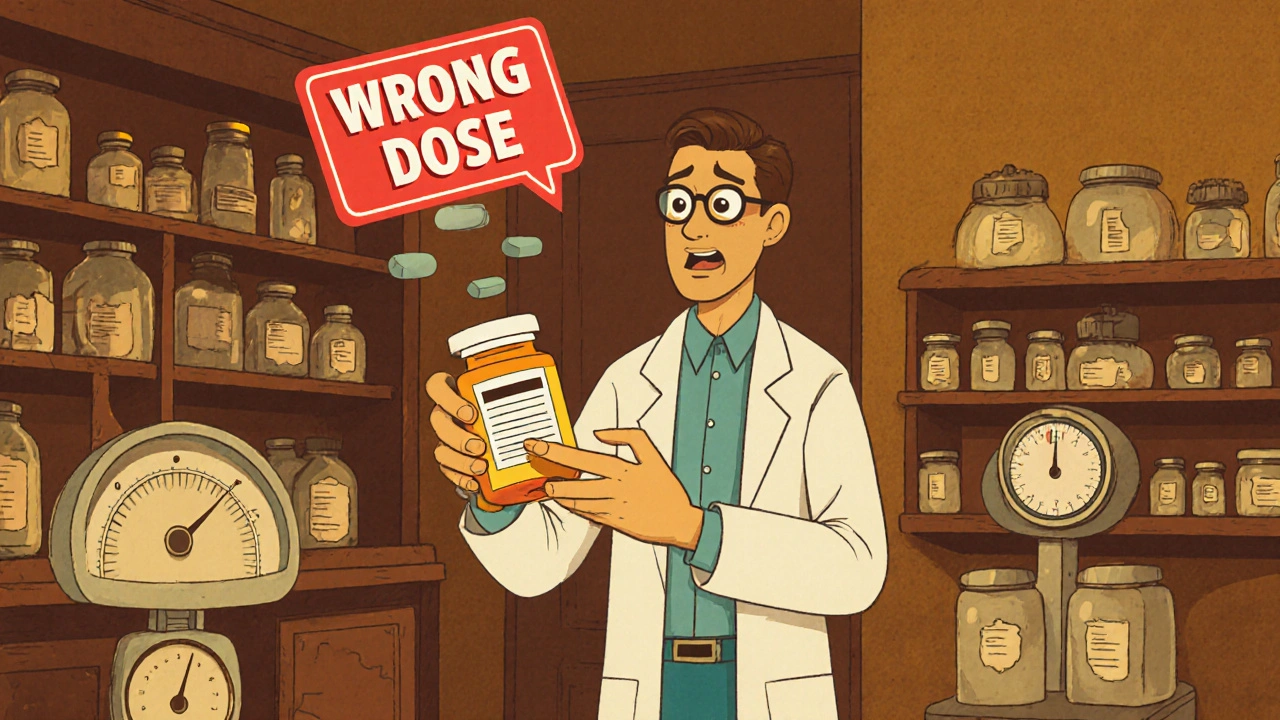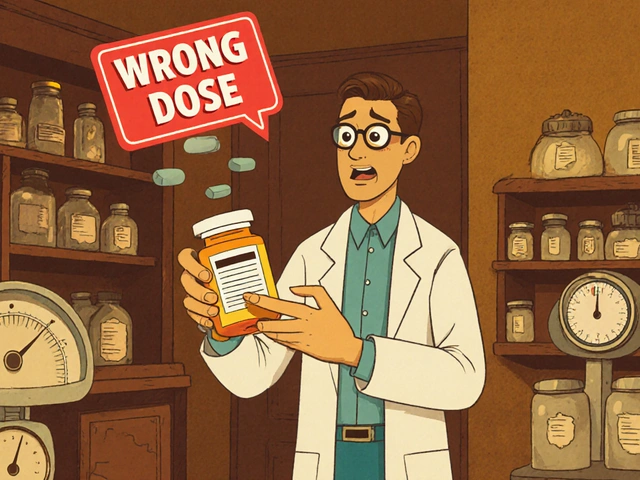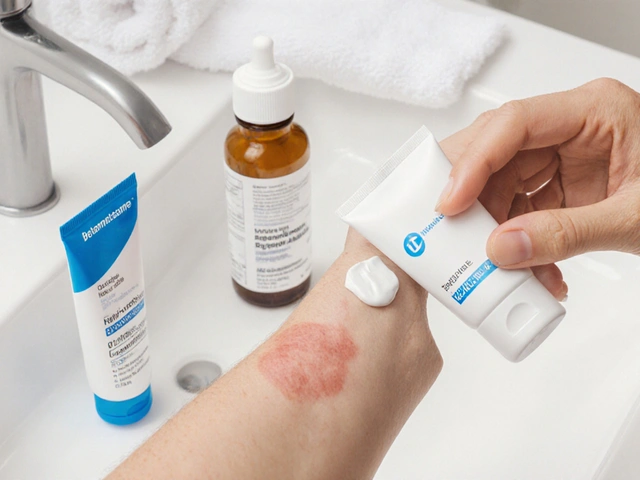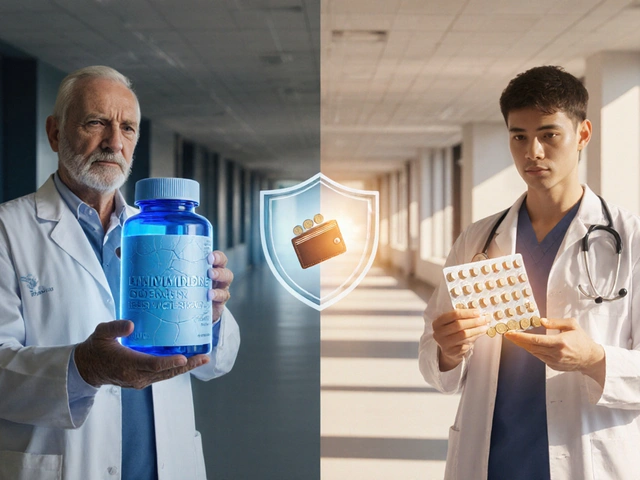Getting the wrong medicine or the wrong dose from your pharmacy isn’t just a mistake-it’s a safety risk. Maybe you picked up a prescription and noticed the pills look different. Or perhaps the label says 10mg when your doctor prescribed 5mg. You might feel confused, angry, or even scared. You’re not alone. Thousands of people in the UK and the US face this every year. But here’s the thing: reporting that error is the most powerful thing you can do-not just for yourself, but for everyone who walks into that pharmacy next.
What Counts as a Pharmacy Error?
A pharmacy error isn’t just about getting the wrong drug. It includes:
- Wrong medication (like getting amoxicillin instead of azithromycin)
- Wrong dose (50mg instead of 5mg)
- Wrong patient (your prescription given to someone else)
- Wrong instructions (missing directions or wrong frequency)
- Missing warning labels (no allergy alerts, no interaction warnings)
- Expired or damaged medication
Even if you didn’t take the medicine, reporting it matters. A near-miss-like catching the error before swallowing the pill-is just as important as an actual harm. These reports help pharmacies fix broken systems, not just punish a single pharmacist.
How to Report a Pharmacy Error in the UK
If you’re in England, Scotland, Wales, or Northern Ireland, start with the pharmacy itself. Walk in, call, or send a letter. Be clear: say what happened, when, and what you were given. Ask for a formal complaint process. They’re required to acknowledge your complaint within three working days and give you a full response after investigating.
If you’re not satisfied with their reply-or if you think the error was serious-you can escalate it to the NHS. Go to the NHS website and find the complaints section for your local NHS trust. You have up to 12 months from the date of the error to file. The NHS doesn’t blame individuals. They look at how the system failed: Was the workflow rushed? Were staff under pressure? Was the software glitching?
For serious cases-like an overdose, allergic reaction, or hospitalization-you can also report to the National Reporting and Learning System (NRLS). This is the UK’s official patient safety database, managed by NHS Improvement. It’s anonymous, confidential, and used to spot nationwide trends. You don’t need to give your name, but if you do, they’ll follow up.
How to Report a Pharmacy Error in the US
In the US, you have three main options, depending on what kind of error it was.
1. Report to the FDA via MedWatch
If the error caused harm-or could have caused serious harm-file a report with the FDA’s MedWatch program. You can do it online at the FDA Safety Information and Adverse Event Reporting Program portal, call 1-800-FDA-1088, or fill out Form 3500B. You don’t need to be a doctor. Consumers report most of these. The FDA gets over a million reports a year, and about 85% come through digital forms. They don’t investigate every single one, but they track patterns. If 10 people report the same error from the same pharmacy, they’ll send an inspector.
2. Report to ISMP MERP
The Institute for Safe Medication Practices (ISMP) runs a confidential, non-punitive reporting system called MERP. Call 1-800-233-7767 or submit online. This isn’t a government agency-it’s a nonprofit focused on learning. They ask for details: What was the drug? What was the error? Was the pharmacist rushed? Was the barcode scanner broken? They use this to publish safety alerts and train pharmacies. Their reports have led to changes in labeling, packaging, and pharmacy software.
3. Report to Your State Board of Pharmacy
Every state has one. In California, for example, you can file online at pharmacy.ca.gov or download a PDF form. You’ll need to provide the prescription details, the pharmacy name, and if possible, the original container. The board investigates and can fine the pharmacy or suspend the pharmacist’s license. In 2021, they received 1,842 complaints-and took action in 217 cases.
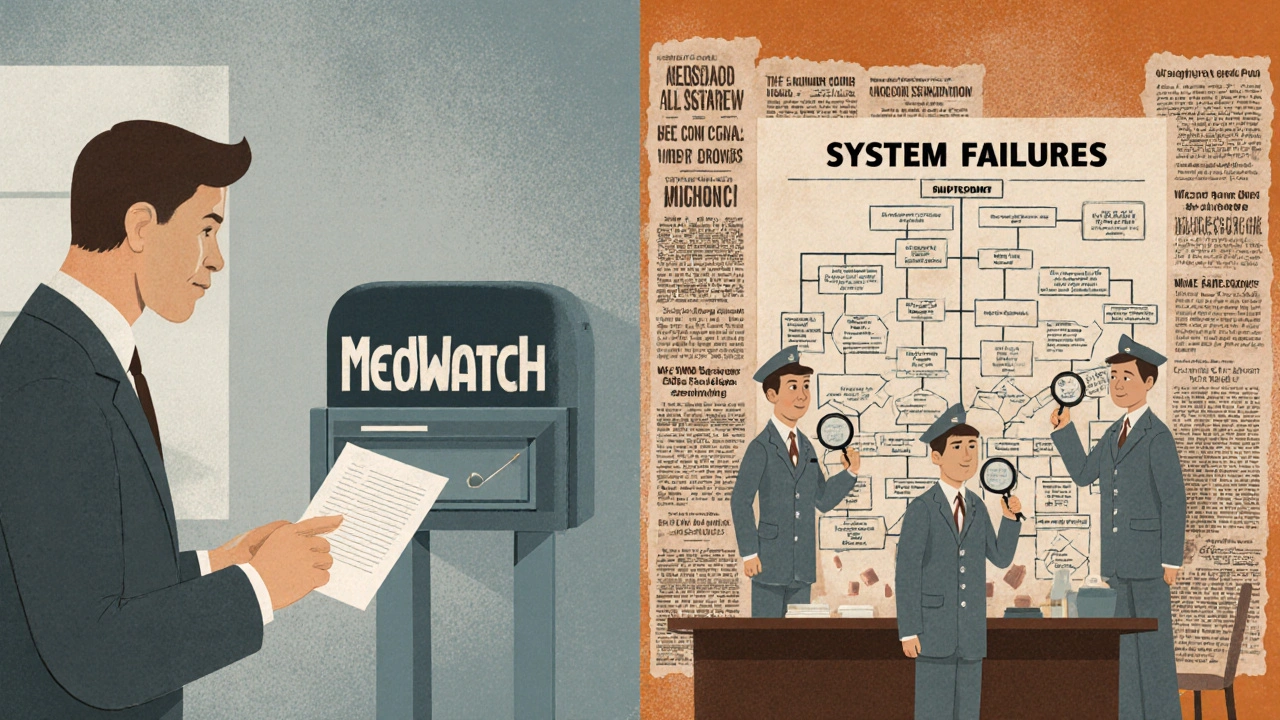
What Happens After You Report?
Many people think reporting leads to punishment. It rarely does. Most systems are designed to fix the problem, not blame the person.
Here’s what usually happens:
- The pharmacy reviews the incident internally. They might retrain staff, update their software, or change how prescriptions are double-checked.
- If you reported to the NHS or a state board, they’ll send you a written update within 30 to 90 days.
- ISMP and NRLS publish anonymized summaries of common errors so all pharmacies can learn.
- Some errors trigger national alerts. For example, after several reports of insulin dosing errors, the FDA changed labeling standards for insulin pens in 2022.
Don’t expect a phone call from the pharmacy saying, “We fixed it because of you.” That rarely happens. But if you see the same pharmacy change their process-like adding a second pharmacist check for high-risk drugs-that’s your impact.
What You Should Keep
Before you report, gather what you can:
- The original prescription label
- The medication container (even if empty)
- Receipt or pharmacy confirmation number
- Any notes from your doctor or nurse
- Photos of the pills or label if you can’t keep the container
These aren’t always required-but they make your report 3.7 times more likely to lead to action, according to a 2022 University of Michigan study. If you’re unsure what to include, just write down what happened in plain language: “I asked for 5mg of lisinopril. I got 20mg. I didn’t take it, but I’m worried others might.”

Why Most People Don’t Report-and Why You Should
A 2023 survey found that 41% of people who experienced a pharmacy error didn’t report it because they didn’t know how. Another 29% thought it wouldn’t make a difference. And 18% feared retaliation.
Here’s the truth: Retaliation is rare. Pharmacies are legally required to protect patients who report errors. And your report? It’s not about getting someone fired. It’s about stopping the next person from almost dying.
One woman in Ohio reported a mislabeled diabetes medication. The pharmacy fixed their labeling system. A month later, another patient caught the same error-because the new labels made it obvious. That patient didn’t even know the first report existed. Your report can save someone you’ll never meet.
What’s Changing in 2025
Things are getting better. In 2023, the FDA launched a mobile app for MedWatch to make reporting easier. California now lets you track your complaint online in real time. The National Coordinating Council for Medication Error Reporting and Prevention updated its terminology so all systems use the same words. And in March 2023, the ECRI Institute-ISMP PSO launched a new consumer portal that’s simple, fast, and legally protected.
Still, progress is slow. Only 14% of serious errors are ever reported. The system still relies on patients to speak up. Until that changes, your voice is the most important tool we have.
What to Do If You’re Still Unsure
If you’re stuck, call your local hospital’s patient safety office. Most have a dedicated line. Or contact your state’s pharmacy board or NHS complaints team. They’ll guide you. Don’t wait. Don’t assume someone else will report it. The system only works if you use it.
What should I do if I took the wrong medication?
If you took the wrong medication, contact your doctor or go to the nearest emergency room immediately. Then report the error to your pharmacy, the NHS (in the UK), or the FDA (in the US). Keep the medication and packaging for evidence. Even if you feel fine, some errors cause delayed reactions. Don’t wait to report-it helps prevent others from being harmed.
Will the pharmacist get in trouble if I report?
Usually, no. Most reporting systems are designed to fix systems, not punish people. Pharmacies are under pressure, understaffed, and overworked. A single mistake often points to a broken process-like a confusing computer screen or a rushed workflow. The goal is to fix that process so it doesn’t happen again. Only in cases of repeated negligence or intentional harm will disciplinary action occur.
Can I report anonymously?
Yes. The NHS NRLS and ISMP MERP accept anonymous reports. The FDA MedWatch doesn’t require your name. State boards may ask for contact info to follow up, but you can still file without giving your full details. Your identity is protected by law in all major systems.
How long does it take to get a response?
It varies. NHS and state pharmacy boards typically respond within 30 to 90 days. ISMP and NRLS don’t always reply individually, but they publish aggregated findings publicly. If you don’t hear back after 90 days, follow up. Persistence matters.
Is it worth reporting a small error?
Yes. Small errors-like a label mix-up or a missing warning-are often the warning signs of bigger problems. One mislabeled pill might be a fluke. Ten mislabeled pills in a month? That’s a system failure. Reporting even small mistakes helps prevent the next big one.
What if the pharmacy denies the error?
If they deny it, escalate. Get your prescription records from your doctor. Take photos of the medication you received. File a report with the NHS or state board anyway. They’ll investigate independently. You don’t need the pharmacy’s agreement to report. Your word, backed by evidence, is enough to start an investigation.
